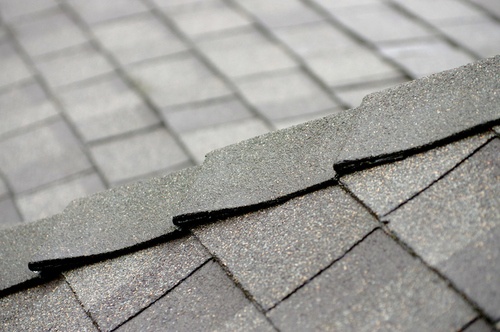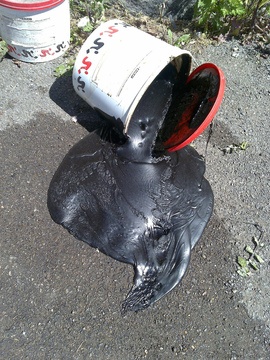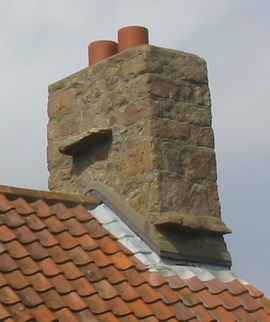Metal Roof vs Asphalt Shingles
Metal Roof
$7,500 - $15,000
(steel or aluminum roofing for a 1,500 sq. ft. home, installed)
VS
Asphalt Shingles
$2,100 - $4,800
(organic asphalt shingles for a 1,500 sq. ft. home, installed)
Cost to install metal roofing or asphalt shingles varies greatly by region (and even by zip code).
To get free estimates from local contractors, please indicate yours.
Metal Roof

- Can be installed over an old roof
- Material is lighter
- More energy efficient
- Little maintenance
- Eligible for tax credits and insurance discounts
- More durable
- Fire resistant
- 100 percent recyclable
- Higher home resale value
- Longer warranties
- More difficult to install
- Can be noisy without proper installation
- Materials and installation cost more
- More difficult to repair
(steel or aluminum roofing for a 1,500 sq. ft. home, installed)
Get free advice and estimates from roofers in your city.
Asphalt Shingles

- More popular with homeowners
- More variety of colors
- Easier and faster to install
- Materials and installation cost less
- Performs well in winter
- Less expensive to repair
- Some are fire resistant
- Can be recycled
- Old roof should be removed before installation
- Material is heavier
- Less durable
- Subject to wind and hail damage
- Susceptible to mildew, algae, and mold
- Absorbs heat from the summer sun
(organic asphalt shingles for a 1,500 sq. ft. home, installed)
Get free advice and estimates from roofers in your city.
You want more than a basic shelter when you plan where you will live, and the roof can be what makes the difference between a house and safe, secure home. A roof fits the structural design, protects you from the elements, and insulates you from summer’s heat and winter’s cold. Below, we will discuss two choices for roofing, metal roofs and asphalt shingles, so that you can decide which is better for you.
Varieties
Metal roofing comes in a variety of styles, largely dependent on the metal used and coatings applied. Aluminum is a metal that needs no coating. Steel, on the other hand, requires specialized treatment to prevent rusting. Other metals used for roofing are copper, zinc, stainless steel, and titanium.
Asphalt shingles come in two varieties, the newer fiberglass shingles and traditional organic ones. The difference is in their layered make-up. Fiberglass shingles have a fiberglass 1 core covered with an asphalt layer. Organic shingles have a heavy felt layer under the asphalt.
Appearance
The layered look of asphalt shingles is by far the more popular of the two types. The vast majority of homes in the United States have asphalt 2 shingles, largely because asphalt is the material most builders trust and what homeowners are accustomed to seeing on houses. Asphalt shingles can vary in colors to match the paint or brick of a home, and the variety of their colors is more than with metal roofing. The three-tab shingles give a flat appearance while the more expensive architectural shingles appear more three dimensional.
Metal roofs are rarely seen in urban and suburban areas. The sleek, metallic appearance seems more suited for an agricultural setting. Metal roofing does come in a variety of colors and styles to match the rest of the home. The metal can be in panels, tiles, or shingles 3, but the look of a metal roof still can be jarring in a neighborhood full of asphalt shingles.
Installation
Installing asphalt shingles is easier to do than installing a metal roof, but due to the weight of shingles, especially the traditional ones, the previous shingle materials may need to be removed first. Also, warranty and insurance requirements may demand the removal of previous asphalt shingles. A roofing square of three-tab shingles, which is 100 square feet, can weigh 200 pounds, and a square of architectural shingles can weigh up to 500 pounds. Because the installation is easier, even with removing a previous roof, installing asphalt shingles can take as little as a day or two of labor, depending on the size of the house.
Some metal roofing, on the other hand, is much lighter and can be installed directly over the previous roof. The weight varies by the material used. Aluminum weighs only about 50 pounds per square while steel weighs 100 to 250 pounds. One reason why roofing with metal takes longer is the extra step of laying plywood 4 or oriented strand board (OSB) under the metal. This additional step eliminates the added noise of metal. With proper installation, rain or even hail should sound no different inside a home with a metal roof than it does inside a home with asphalt shingles.
Both of these jobs are best left to professionals. Working on a roof can be dangerous, and installing roofing materials is an exacting job. Areas around vents must be properly sealed, and flashing 5 must be carefully put into place. Also, some warranties may be voided if the materials are not professionally installed.
Costs
Metal roofing will cost approximately $265 to $600 per roofing square or $2 to $6 per square foot for steel or aluminum shingles, $120 to $150 for corrugated steel panels, and $700 to $900 for copper or zinc. After adding installation, a steel or aluminum roof will cost about $500 to $1,000 per square. For a home with a 1,500-square-foot roof, this comes to about $7,500 to $15,000. For a home with a 2,500-square-foot roof, this comes to $12,500 to $25,000. This is, on average, about three times the cost of asphalt shingles and is another reason many homeowners opt for asphalt shingles instead.
Asphalt roofing is much less expensive, about $60 to $90 per roofing square for three-tab asphalt shingles or $100 to $120 per square for architectural shingles. Below the shingles will be felt at $40 per roll or synthetic underlayment 6 at $85 per 400 square feet. Installation costs about $80 to $200 per square, and removal of a previous roof adds about $80 to $150 per square. If architectural shingles are used, the labor rises to $200 to $400 per square. A highly pitched or steep roof will add even more to the installation cost. For a home with a 1,500-square-foot roof, the cost of a three-tab shingle roof comes to about $2,100 to $4,800 without the removal of the previous shingles, an additional $1,200 to $2,250. For a home with a 2,500-square-foot roof, the cost comes to between $3,500 and $8,000 without the removal of the previous shingles, an additional $2,000 to $3,750. These prices make asphalt shingles almost a certain choice for first-time homebuyers and contract builders. Newer fiberglass varieties can be even less expensive.
Energy Efficiency
A metal roof will lower your energy bills by about 40 percent in the summer. The reflective surface lessens the transfer of heat into the home. On the other hand, asphalt shingles absorb the sun’s heat, transferring it through the roof to the home, making the home’s cooling system work harder. This is why asphalt shingles are recommended more strongly for temperate climates.
In winter, asphalt shingles perform better, using the heat absorbed from the winter sunlight to make the home much warmer. However, metal roofs also perform well in winter. The year-round energy usage will still be lower with metal than with asphalt.
Even so, some asphalt shingle styles are designated as cool roofs and join some metal roofs in carrying an Energy Star rating for higher energy efficiency. These roofing materials are certified to reflect more of the sun’s energy, lowering the roof’s temperature by up to 50 degrees Fahrenheit. Even though other factors can affect the amount of savings offered, they can decrease demand on the home’s cooling systems at peak times by 10 to 15 percent.
To offset the cost of installing a new roof, you can look for Energy Star certified asphalt shingles or metal roofs. When using these energy-efficient materials, 10 percent of the materials cost, up to $500, can be received as an energy credit.
Durability
The higher cost of metal roofing is also offset by its long-life expectancy. A metal roof can last for 60 years or more with little maintenance. Most roofing manufacturers offer a 50-year warranty on metal roofs. However, an asphalt roof will need to be replaced two or three times during that same 60-year period. Warranties for asphalt shingles vary from 20 to 25 years.
Asphalt shingles are susceptible to hail and high wind damage, although fiberglass shingles are more durable than organic ones. Also, if asphalt shingles do not get adequate sunlight, they can accumulate mold, algae, or mildew. Metal roofs, on the other hand, are superior performers in high winds and bad weather, and they are impervious to molds, mildews, and bugs. Metal roofs perform so well under harsh conditions that homeowners in over 25 states are eligible for insurance discounts when they install impact- and fire-resistant metal roofs.
If the metal roof is a low-quality steel without an adequate rust-resistant coating, then use near salt water is not advised. More expensive, rust-resistant metal alloys and coatings should be used instead.
Fire Resistance
Some manufacturers’ asphalt shingle lines are rated Class A for fire safety, especially the fiberglass varieties. Also, all metal roofs are fire resistant, steel and copper more so than aluminum. This makes metal roofing a good choice in areas prone to wildfires.
Recyclability
Metal roofs win the day regarding recycling issues. Some are made with recycled materials, and all are completely recyclable. About 1 million tons of asphalt shingles are disposed of each year, and they can be recycled into a variety of products. The cost to recycle them is generally less than to place them in landfills. However, available recyclers for asphalt shingles are few, but the development of more recycling availability is underway.
Maintenance
Repairs are more difficult with metal roofing since most of the metal used is made in sheets and must be replaced that way. When damage occurs to a roof, asphalt is easier and less expensive to repair or replace. Metal roofs require little maintenance and need to be repaired far less frequently.
Resale Value
Because a metal roof is strong, durable, and energy efficient, it should increase a home’s resale value. By some estimations, the resale value will increase by 1 to 6 percent over a house with asphalt shingles. The buyer must want the look of a metal roof, however. Any new roof will help sell a home since buyers want to feel secure about the condition of the roof over their heads.
Remodeling Terms Cheat Sheet
Definitions in laymen's terms, cost considerations, pictures and things you need to know.See full cheat sheet.
 1 Fiberglass: Plastic that is reinforced with glass fibers. The fibers may be mixed randomly throughout the plastic, or come in the form of a flat sheet, or be woven into a fabric
1 Fiberglass: Plastic that is reinforced with glass fibers. The fibers may be mixed randomly throughout the plastic, or come in the form of a flat sheet, or be woven into a fabric
 2 Asphalt: A viscous, black mixture of hydrocarbons often used for roofing and waterproofing. It is also used in asphalt for paving roads
2 Asphalt: A viscous, black mixture of hydrocarbons often used for roofing and waterproofing. It is also used in asphalt for paving roads
 3 Shingles: A smooth, uniform, flat piece of construction material, available in a wide variety of materials and laid in a series of overlapping rows, used to cover the outside of roofs or walls to protect against weather damage and leaks.
3 Shingles: A smooth, uniform, flat piece of construction material, available in a wide variety of materials and laid in a series of overlapping rows, used to cover the outside of roofs or walls to protect against weather damage and leaks.
 4 Plywood: An engineered construction material manufactured from thin slices of wood glued together in alternating grain patterns for strength
4 Plywood: An engineered construction material manufactured from thin slices of wood glued together in alternating grain patterns for strength
 5 Flashing: Pieces of sheet metal used on roofs to cover joints, such as where the roof meets the wall, or around a chimney or skylight, to protect them and prevent water leaking through
5 Flashing: Pieces of sheet metal used on roofs to cover joints, such as where the roof meets the wall, or around a chimney or skylight, to protect them and prevent water leaking through
How much does it cost to install metal roofing or asphalt shingles in my city?
Cost to install metal roofing or asphalt shingles varies greatly by region (and even by zip code).
To get free estimates from local contractors, please indicate yours.